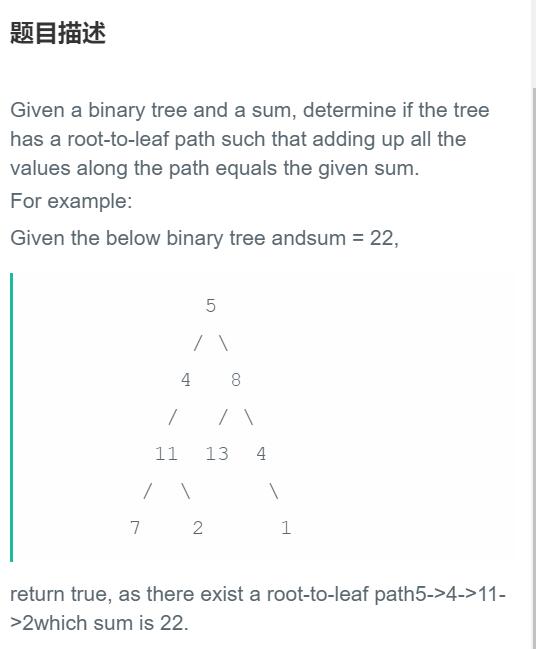
import java.util.ArrayList; class TreeNode { int val; TreeNode left; TreeNode right; TreeNode(int x) { val = x; } }public class Solution { ArrayList<ArrayList<Integer>> arr=new ArrayList<ArrayList<Integer>>(); public boolean hasPathSum(TreeNode root, int sum) { ArrayList<Integer>list=new ArrayList<>(); getPaths(root,sum,list); return arr.size()>0?true:false; } //递归函数实现路径存储 public void getPaths(TreeNode root,int sum,ArrayList<Integer>list){ if(root==null) return; if(root.left==null&&root.right==null&&sum-root.val==0){ list.add(root.val); arr.add(new ArrayList<Integer>(list)); list.remove(list.size()-1); return; } list.add(root.val); getPaths(root.left,sum-root.val,list); getPaths(root.right,sum-root.val,list); list.remove(list.size()-1); } public static void main(String[]args){ //System.out.println("Hello World!"); TreeNode root=new TreeNode(5); root.left=new TreeNode(4); root.right=new TreeNode(8); root.left.left=new TreeNode(11); root.left.left.left=new TreeNode(7); root.left.left.right=new TreeNode(2); Solution s=new Solution(); System.out.println(s.hasPathSum(root,22)); } }






























还没有评论,来说两句吧...